PolyU BA fashion students discuss the challenges - and interruptions - of preparing collections for their final-year show, which due to coronavirus concerns, has been ‘refashioned’ into an exhibition at PolyU Fashion Gallery
Connie Luk Tsz-ting
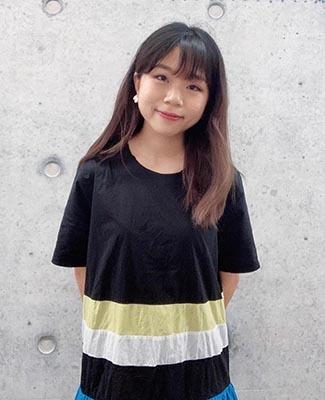 Connie Luk Tsz-ting
Connie Luk Tsz-ting
Describe your collection.
Multiverse is a unisex collection with green-blue as the main colour, with orange and iridescent hues as highlights, which creates contrast and different spaces. For construction, 3D printing is used in various shapes and scales for the circle in each outfit, which reflects the different versions of worlds, like the multiverse. Allowing different fabric choices, 3D printing is applied on the belt, vest and hood.
What was your inspiration?
This collection is inspired by the multiverse that cannot be seen. In fact, there’s a strong connection between different times and spaces. You can feel it and imagine it in hyperspace. In the multiverse, gender is not a restriction – you can be anyone you imagine. Through the surrealism and the unisex style, you can experience infinity and beyond.
Did the events of this year impact your designs in any specific way?
Given the consequences of COVID-19, there were difficulties in the flow of making garments. The mainland factories were closed for a few months, which caused delays in buying fabrics and sewing garments. On the other hand, since 3D printing is one of the main elements in the collection, the time was less restricted for getting the fabric, which is one of the advantages of using this technology. I think 3D printing can be developed even more in the future in the fashion industry.
Who’s your favourite designer?
Jun Takahashi, the Japanese fashion designer and director of Undercover, is my favourite. I admire his talent for putting different elements, colours and layers into contemporary and functional fashion design, especially in using digital printing and contrasting colours. On the main body, his printing develops fascinatingly through graphic patterns, artistic styles and photos.
Where do you position Hong Kong design on the international scene?
As a consumer society, Hong Kong focuses more on commercial design. Sometimes creativity is restricted, and resources for designers aren’t sufficient. It’s hard to get support here for innovative ideas, materials and learning environments in terms of creativity. The best way to push Hong Kong design on the global scene is to get more exposure for innovative local design, both overseas and on the mainland. Most importantly, we need a better learning environment for creativity and design.
What sort of customer are you targeting with this collection?
The target customer is unisex, 20 years and older, who could be a backpacker, an explorer or just about anyone. They pay attention to fashion and functional details, and enjoy exploring the unknown.
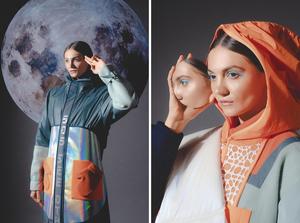 A pair of futuristic looks from the unisex Multiverse collection
A pair of futuristic looks from the unisex Multiverse collection
Heidi Leung Hoi-ting
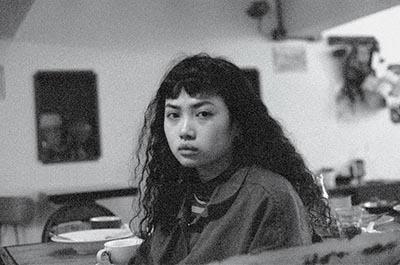 Heidi Leung Hoi-ting
Heidi Leung Hoi-ting
Describe your collection.
The Extreme Storage collection was designed with six outfits in womenswear and knitwear, inspired by the urban phenomenon of extreme storage, combined with Hong Kong granny style. I’d like to present the daily life of an ordinary Hongkonger, in which each outfit is an interpretation of different circumstances or places. The aim of the collection is to capture and express my appreciation for these valuable, authentic lives in Hong Kong culture and reflect this overlooked original appearance of the city. Inspired by the layered and baggy storage structure of the extreme accumulation of random objects, the collection is a combination of various knitted structures, materials and textures, with contrasting colours and voluminous garment silhouettes. The upcycling of unwanted clothes, bedsheets from my friends, discarded items and industrial straps also featured in the collection.
What was your inspiration?
I like wandering around the older districts and filming interesting stuff in my leisure time. That’s how I found my inspiration – “extreme storage” is a living solution that’s considered to be an “art of survival” in highly dense Hong Kong. With limited space, citizens creatively utilise the utmost amount of their space for storage. We can find this art of survival in our homes, wet markets, urban back alleys or any hidden corners in this concrete forest, which reflects the social realities and the lives of ordinary Hong Kong citizens. It’s an authentic and unique lifestyle that should be retained under this globalisation. I hope this collection can change the public’s negativity towards the “messy” phenomenon of extreme storage, raise people’s awareness of things that are around them, and have them appreciate the unique lifestyle and culture of Hong Kong.
 A distinctly Hong Kong look from the collection
A distinctly Hong Kong look from the collection
Did the events of this year impact your designs in any specific way?
The events this year have slowed our whole process. For knitwear students, we need to knit our own fabric. The suspension of PolyU in November was so sudden that all my yarn and fabrics were left in the studio, so the whole process stopped. In January, I went to my sponsor factory in Ningbo for ten days. I discussed my swatches with the artisans and ordered a bulk amount of yarn. Then, after Chinese New Year, the outbreak of COVID-19 led to the suspension of my sponsor factory. The progress was hindered again, as I left all the yarn I couldn’t knit at school. It was a tough year for us, but this period of time allowed me to slow down, think deeper and refine my designs.
Who’s your favourite designer?
Recently, it’s Marine Serre. She manages to maintain a good balance between her own aesthetic and commerciality in her design. I believe that a designer should have a story to tell and has a responsibility to promote sustainability. She raises environmental issues like radiation and oil spills through her collections, and uses upcycling materials and vintage garments in her designs, achieving eco-sustainability.
Where do you position Hong Kong design on the international scene?
In my opinion, Hong Kong design has been stagnant without any major breakthroughs in recent years. Not many local designers can reach the international market. Japanese, Chinese mainland and South Korean design is growing and getting global recognition. I feel like most Hong Kong people are quite resistant to new ideas and designs, and just follow trends.
What sort of customer are you targeting with this collection?
I’m targeting those who are enthusiastic about art and culture, and like retro and vintage stuff. Their hobbies include collecting and photography. In addition, it’s for people who pay attention to their own community and identity.
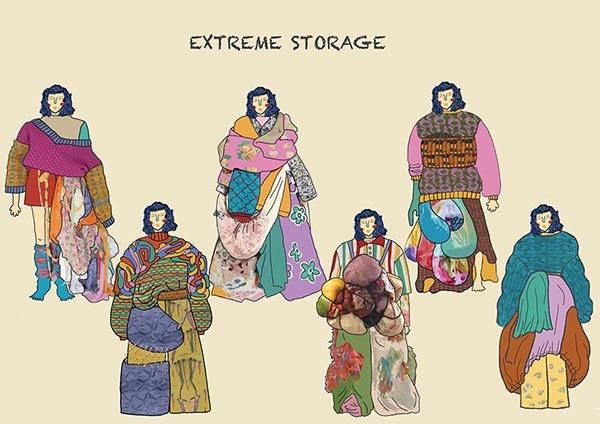 Final line-up sketch for the Extreme Storage collection
Final line-up sketch for the Extreme Storage collection
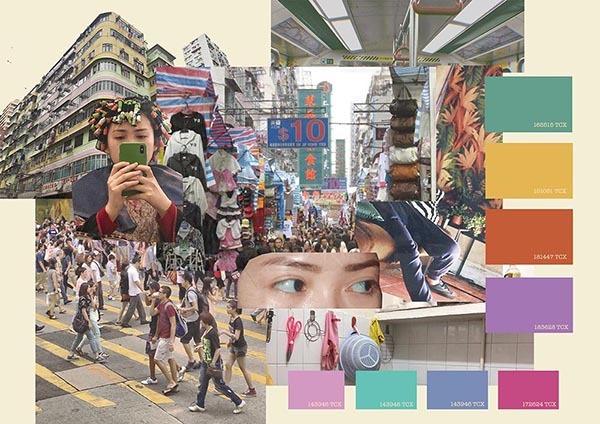 Leung’s mood board
Leung’s mood board
Images provided to China Daily
Click Here for More


